Imagine for a moment the view outside your window a few months from now. The sun moves higher across the sky. The trees are waking up. Delicate creased forms break from branch tips, unfurling into the cool air of a new world, and a forest of tissue-paper leaves glow in the morning sun. Some branches might even show clusters of petals of pink and purple or white and yellow.
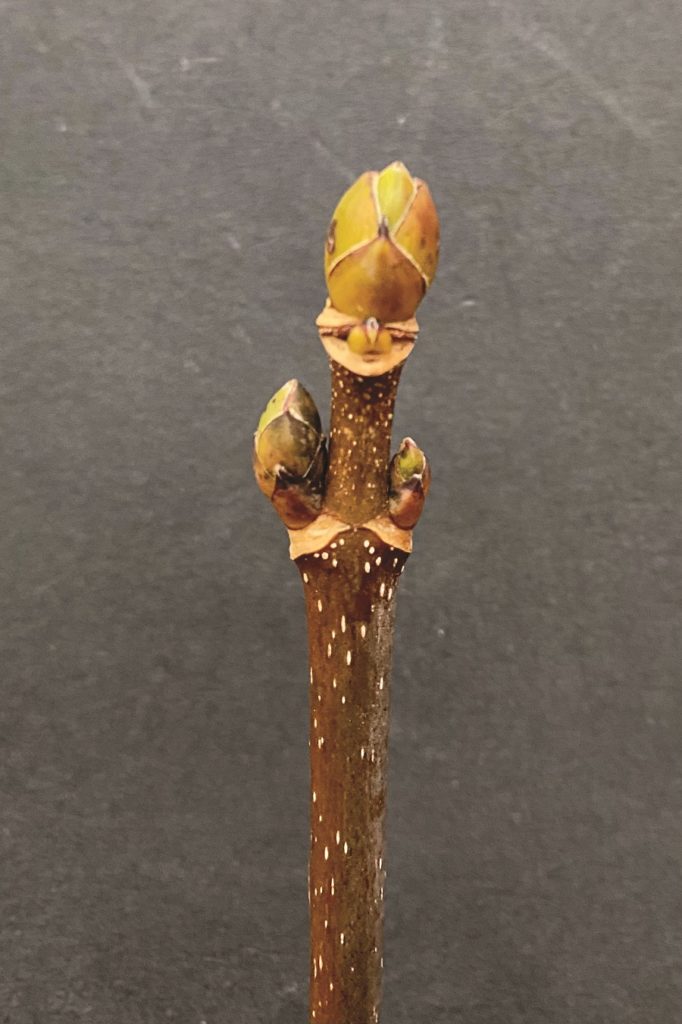
Today the trees are bare. Having let go of last year’s leaves and drawn into their cores the resources gained during the growing season, they now stand naked against smoke-gray skies. They are in a long, deep biological sleep. Their branches have their beauty, holding raindrops, snowflakes, and birds, though that is all, it seems, for now.
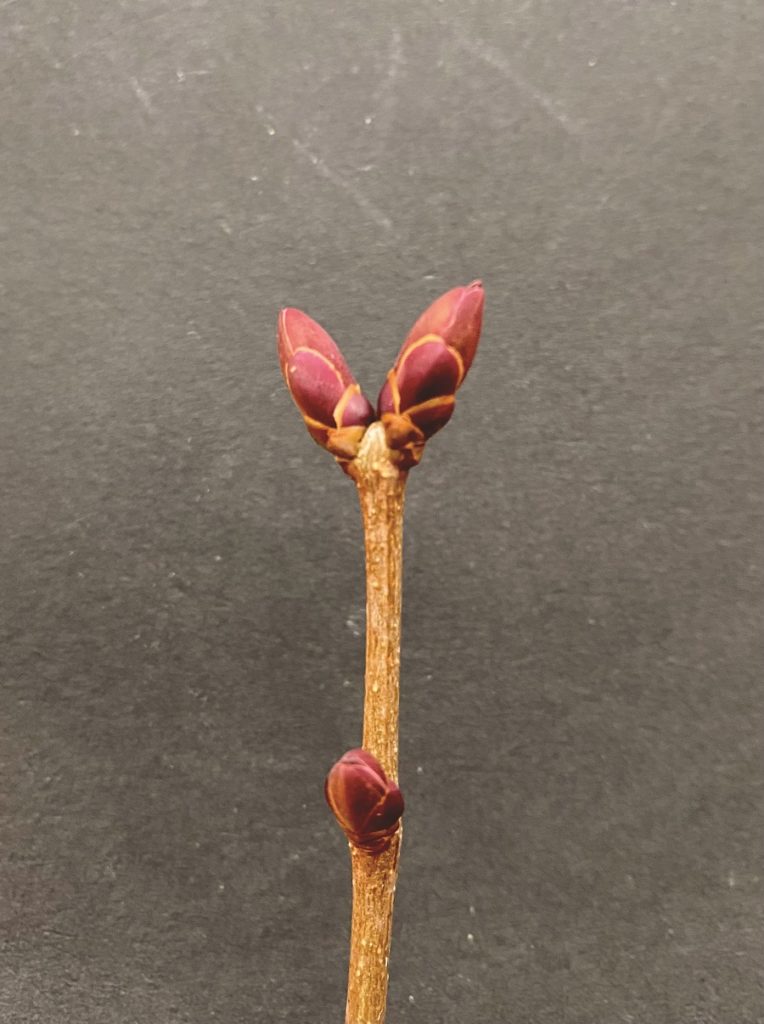
But lean forward. Squint. Focus. Find a branch and trace its line with your eye, following it as it tapers, bends, splits, and twists. Stay with it right out to the very end. There, that’s it. See it?
Here is spring, all of it, contained at the end of a branch.
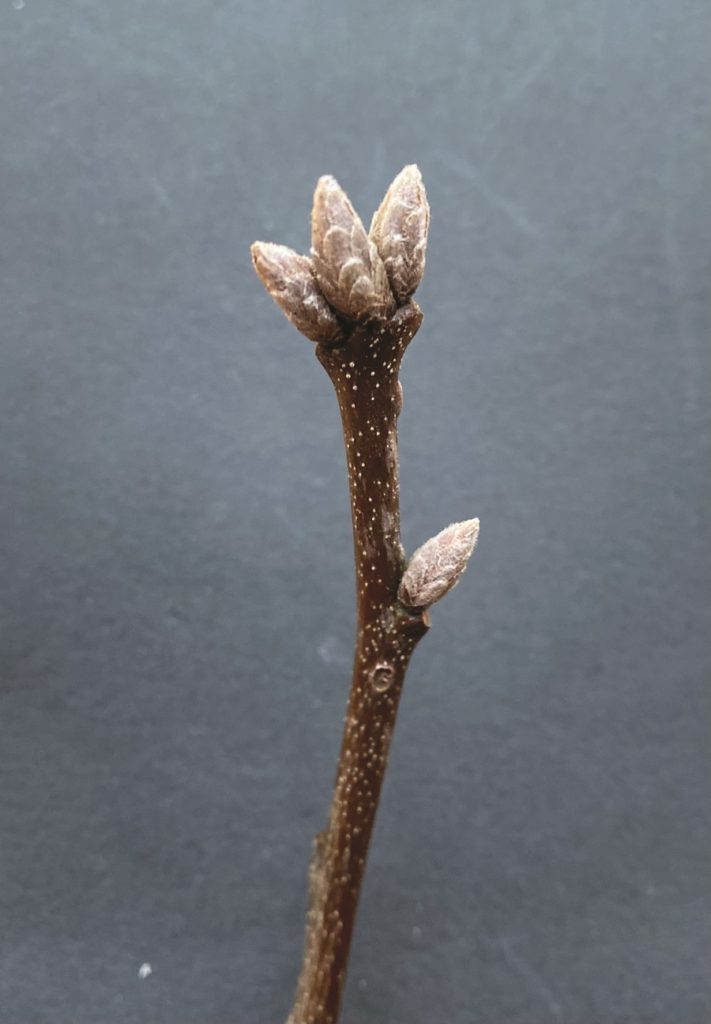
Winter buds are both the protective shells and the tightly packed cells of every leaf and flower that will flush when the days grow long enough and the soil is warm. Each tree species has devised its own style and structure to house those contents. Some buds — those on maples, for example — are made up of overlapping scales in aesthetically pleasing proportions. They seem like something that would live in the ocean — a fish or a shell. Others are waxy or coated in viscous, glistening fluids. Horse chestnut buds do that. Magnolias employ fuzzy little woolen coverings that look like swaddling blankets to keep the future tucked safely inside for the winter.
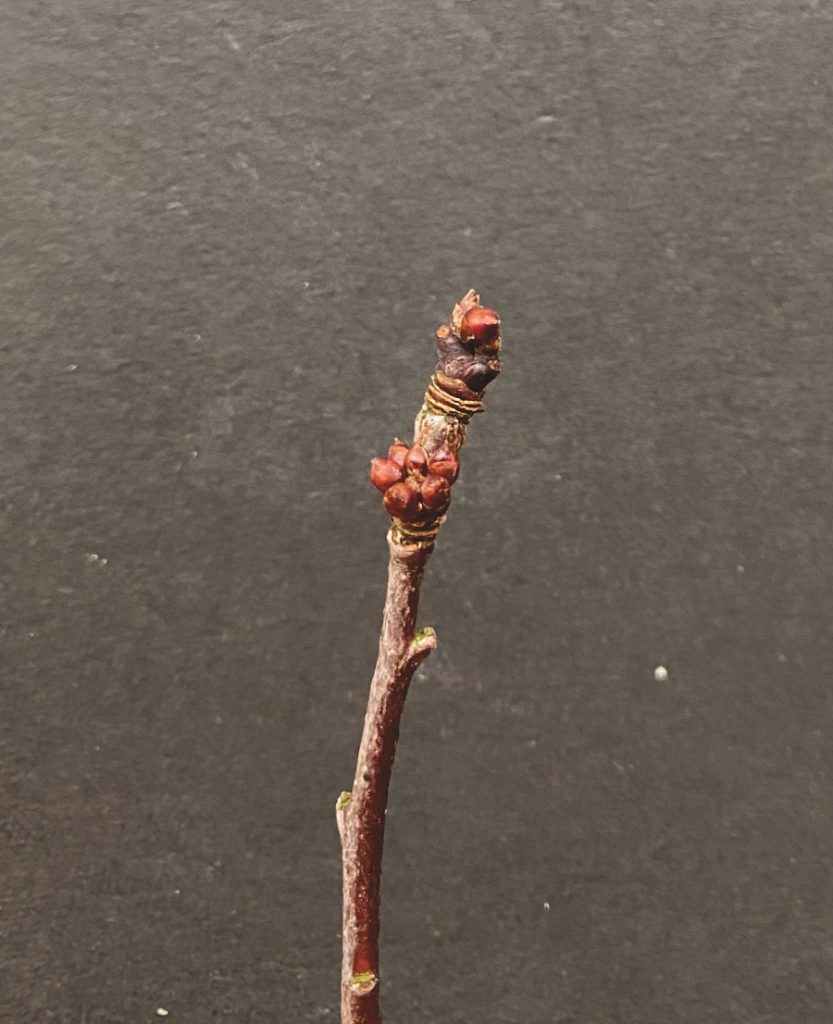
One purpose of the bud covering is to insulate the trees’ bundles of growth from cold, wind, and moisture. But these capsules are also safeguards against pathogens, and they deter insects that want to eat the nutritious treasure inside.
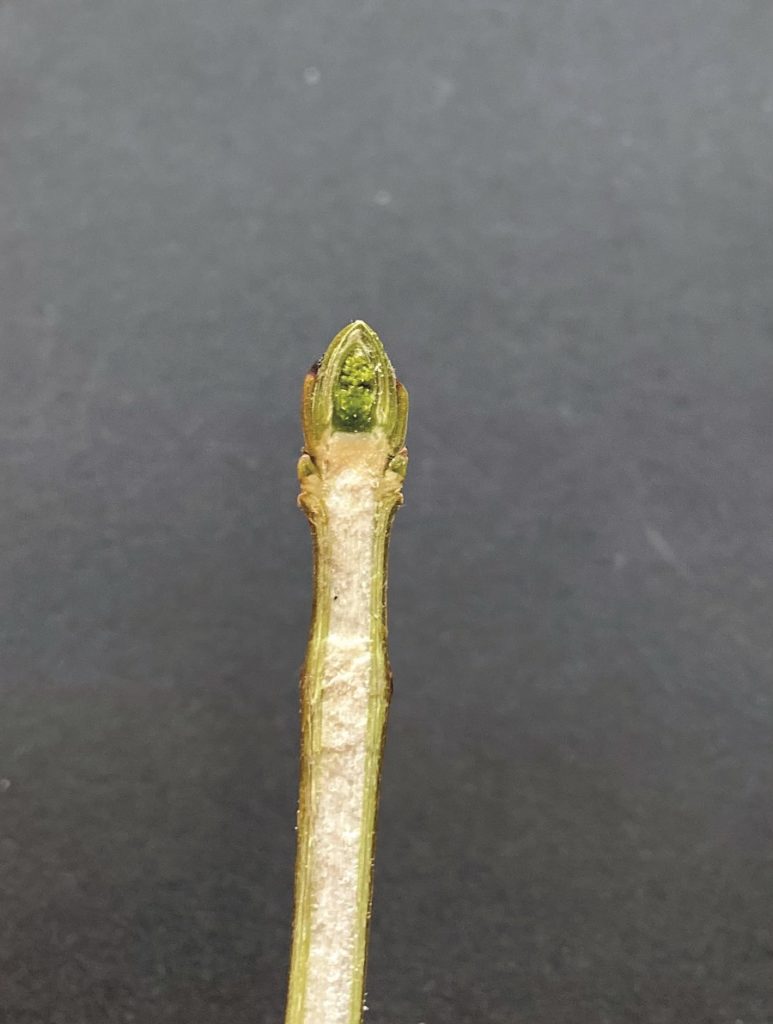
When branches are bare, the structure and arrangement of buds are a reliable way to identify a tree. Buds are arranged in either opposite or alternate positions. Maples, ash trees, chestnuts, and dogwoods have opposite buds. The bud structures mirror one another along the length of the branch. Alternate buds are positioned in zigzag orientation to one another instead. Beeches, hickories, elms, oaks, birches, and walnuts organize their buds in this fashion. Depending on the species, some buds will simply be leaf buds, others only flower buds, and others will be mixed.
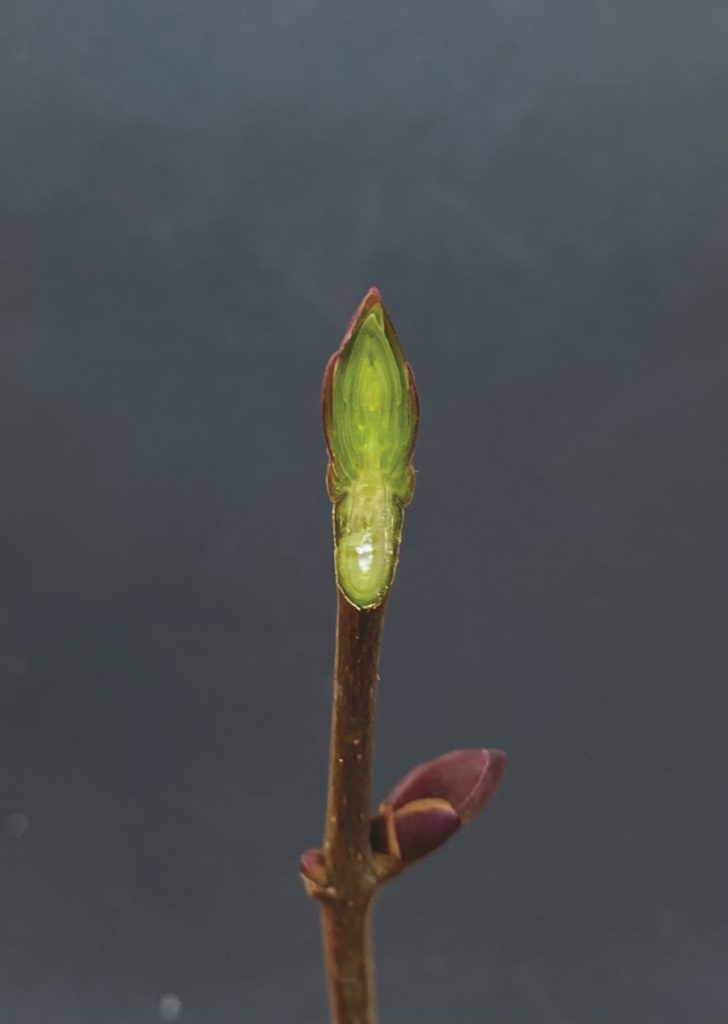
Slice open a gray bud and you will find vibrant green inside. And a most intricate arrangement of soft new tissues, perfectly folded over one another and packed like parachutes awaiting bud-break — the transition from dormancy to new activity. When that happens, the cells inside will expand, divide, and expand again. The petals broadening their wings in slow motion. The leaves becoming sun-gathering sugar producers that will feed the next generation.
A winter bud is a tree’s point of creation, held at a branch’s end, like a jewel held out in offering between fingertips. A gift that adorns winter’s nakedness.



